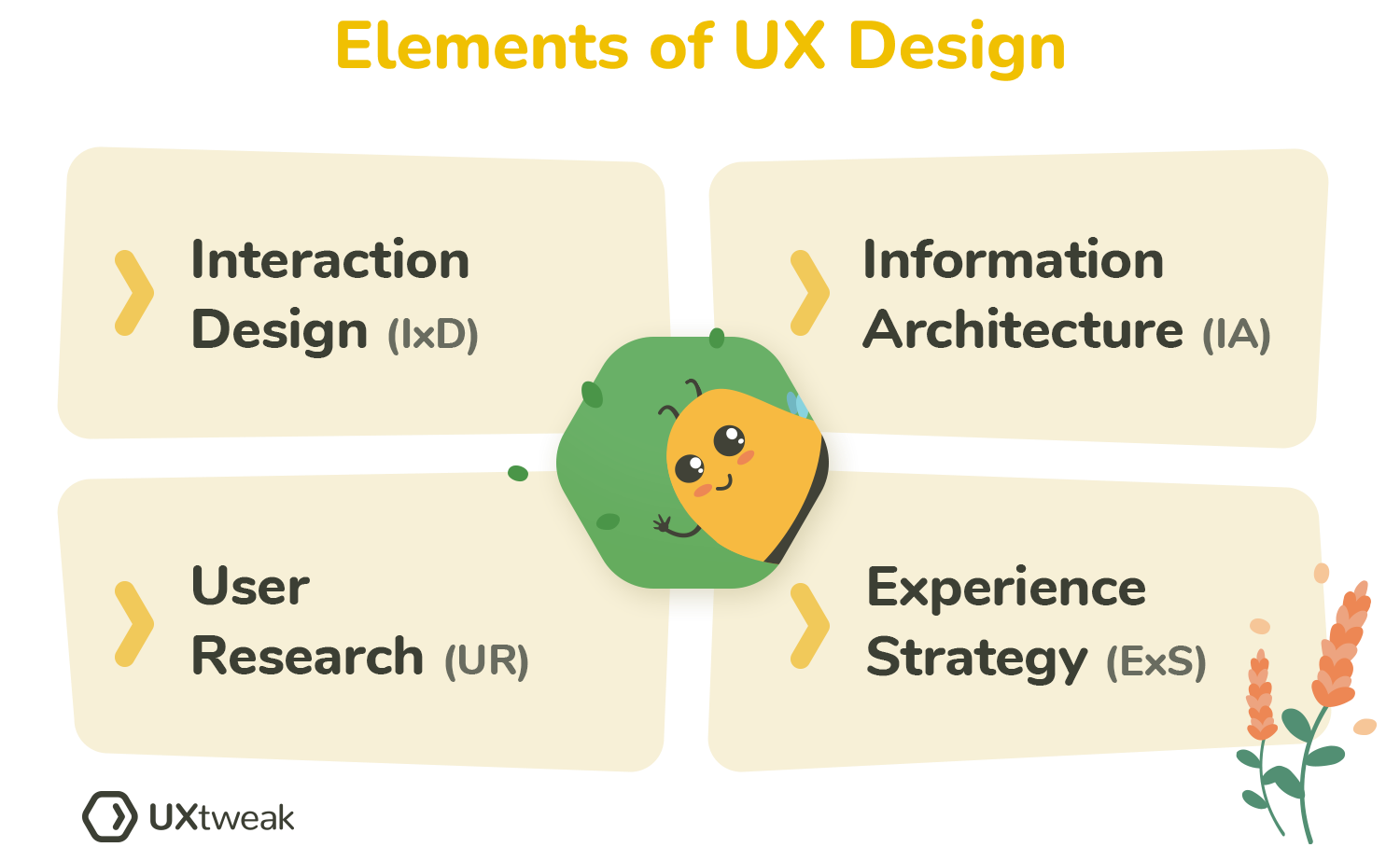Even if we aren’t conscious of it, we are constantly surrounded by user experiences in today’s digital environment. It is quite rare then, that a digital product isn’t created in reaction to our interactions with a service, our quest for knowledge, or our viewpoint.
UX design is the foundation of all the digital products we encounter nowadays. Every website you browse and buy from, all the apps you use were created by UX designers to be visually appealing and easy-to-use for you.
What is UX Design?
UX design (user experience design) is a discipline that considers every component that defines user experience, including how it makes us feel and how easy it is for us to accomplish intended tasks.
The aim of UX design is to improve customer satisfaction by creating products that are easy to use, intuitive, and efficient. Research, data analysis, and test findings, rather than aesthetic viewpoints, drive decisions in this essential design process.
Elements of UX design
There are four core disciplines that makeup user experience:
- Interaction Design
- User Research
- Information Architecture
- Experience Strategy

All of them are a part of the UX design process. However, in design teams, these disciplines are often taken care of by several different team members, not just UX designers. Below, we’ll describe each of them in detail.
Interaction Design (IxD)
Interaction design considers all interactive features of the product – buttons, icons, page transitions, and animations – when examining how a user interacts with a system and its visual design.
Interaction designers strive to develop simple user-centered designs that allow users to execute basic activities and actions with ease.
Adding icons in formats like SVG or PNG allows users to interact with the system more easily than if you were using less common image file types like JPGs for your images. In turn, this will help you ensure your site or app is easy to use and understand.
User Research (UR)
The goal of UX design is to identify a problem and create a solution. This requires in-depth research, as well as input from current and future users. Here’s where user research (also known as UX research) comes in.
To understand the end user’s needs and pain points, user researchers conduct surveys, and interviews, perform usability testing, build journey maps, and do other research activities during the research phase.
They collect both qualitative and quantitative data to help UX designers make informed design decisions. Good research helps you to understand the needs of your users and adjust the user interface beforehand.
Information Architecture (IA)
The discipline of arranging information and material in a meaningful and accessible way is known as information architecture. This is critical for assisting the user in navigating a product.
Information architects evaluate the relationship between distinct types of content while determining the IA of a product. They help to build intuitive navigation menus and organize content in a way that is intuitive for a user by using tools like card sorting and tree testing. They also pay special attention to the language utilized by labels, making sure it is both persuasive and consistent.
Experience Strategy (ExS)
UX design benefits not just the end-user but also the company that provides the product or service. The goal of the experience strategy is to create a comprehensive business plan that considers both the customer’s and the company’s demands.
Why is UX design important?
The experience that your users have with your product plays the main role in retaining customers and satisfying their needs. If you want to get ahead of your competitors, increase conversions, and overall make sure that users love your product, it’s important to take care of designing for good UX.
Here are several reasons why UX is so important:
Improves usability
Good user experience design guides users towards success, without any roadblocks or confusions along the way. User-centered design reduces the learning curve, making interfaces intuitive and minimizing friction. This way, users are able to easily complete their goals with your product and navigate it intuitively.
The usability of your product can be tested with the help of many usability testing tools available online.
Increases conversions
This point is connected to the previous one. When your product is easy to use and satisfies user’s needs perfectly, it’s easier to buy from you and makes customers want to come back. This can increase your conversions and significantly reduce bounce rates.
Helps to stand out from the competitors
When you have a lot of competitors in your market, users have more options to buy from. Offer unique and enjoyable experiences that stand out from the competition, that’s what’ll make them want to buy from you! UX design can help you attract their attention by not only offering pretty interfaces but also usability and functionality.

UX design vs. UI design
UX design is often confused with another similar discipline – UI design. These two may seem similar and they are at some point, however, they play different parts in the process of creating a digital product.
UI design (User Interface Design) is focused on designing the visual aspect of a product, their look, style, and feel. Looking at the bigger picture, UI is often considered to be a part of the UX.
While UX design is focused on altering the product to fit the user journey and respond to user’s needs, solving their problems and confusions, UI design is creating the product itself, making sure it’s not only usable but also visually appealing.
Learn more in our UX vs. UI design comparison.
What does a UX designer do?
A user experience (UX) designer ensures that a product is easy to understand and use. They are involved in the product development process from the beginning to guarantee that teams are designing products that satisfy consumers’ needs and help to solve their problems.
A user’s attraction to, willingness to pay for, and ability to utilize a product is influenced by the decisions made by a UX designer. The changes and modifications a UX designer makes to an existing product can have a beneficial impact on customer retention and lifetime value.
Design thinking plays a pivotal role, guiding user experience designers as they craft interfaces that are not only functional but also seamlessly integrated into the daily lives of users. This approach ensures that the user experience designer is always focused on empathetic design practices, which are essential for creating digital products that truly meet user needs.
What skills does a UX designer need?
UX designers emerge from various areas of life, and a university degree isn’t required to enter the industry. Employers seek a combination of creative talents, business acumen, and soft skills when hiring. The following are some of the most common skills required to be hired as a UX designer:
The following are some of the most common skills required to be hired as a UX designer:
- Prototyping
- Wireframing
- Visual communication
- Ability to iterate your work depending on qualitative feedback and user testing data
- Understanding of information architecture and interaction design concepts
- User research and usability testing
- Empathy and communication
- Collaboration
- Knowledge of and experience with some of the popular UX tools


